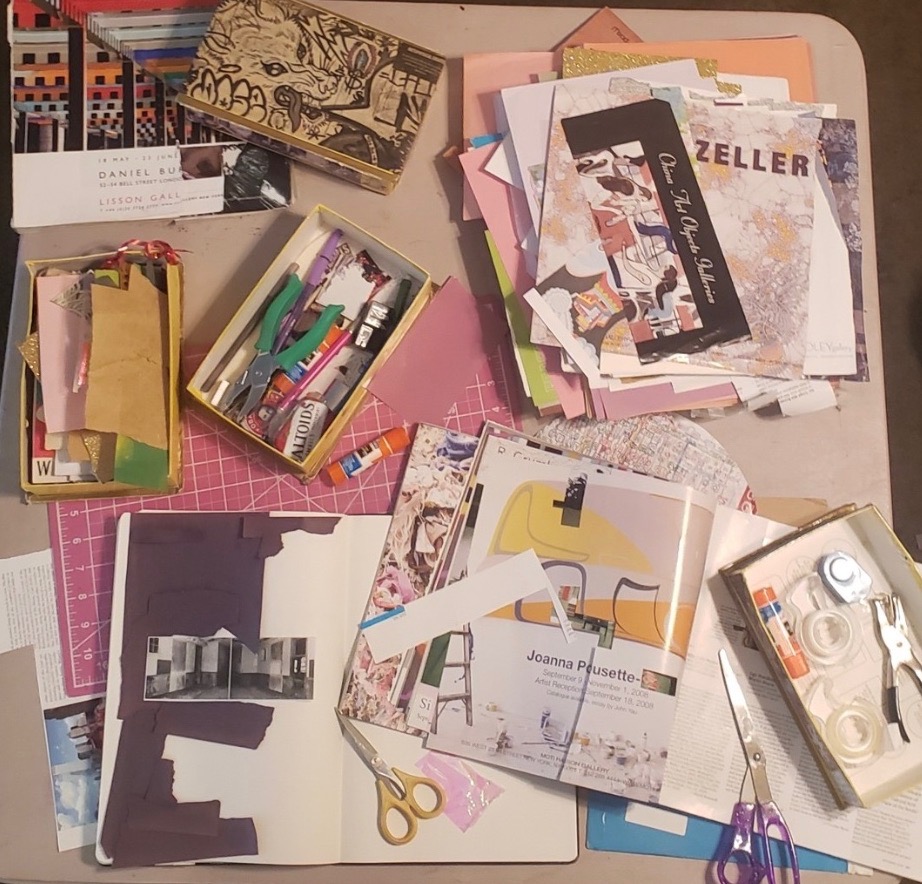As college students navigate academic pressures, social expectations and personal struggles, art therapy can help.
Art therapy, which uses creative expression to enhance mental well-being, has been utilized by both students and professors as a form of psychotherapy.
Students and faculty find relief through art
For some students, art has helped them manage their anxiety. Kirsten McClure, an integrated language arts major, uses drawing as a coping mechanism when she is anxious at night.
“It requires a lot of focus, especially visualizing shapes and breaking down the image into values, so I can’t think about much else,” McClure said. “It’s like all my thoughts have to be on my motor control and eye/hand coordination.”
A professor in the English department at Kent State, Sarah Lawrence, uses art in conjunction with therapy as a coping skill and a way to confront her thoughts. Her interests and skills lean towards collage making.
“Because it’s a collage, it feels a lot like solving a puzzle,” Lawrence said. “Having moved those experiences, thoughts, whatever to a concrete space feels … like I am lighter.”
Whether you’re working with a therapist or using personal art supplies, art therapy can address a variety of mental health concerns, including anxiety, depression, trauma and stress-related issues.
Engaging in artistic activities can lower stress hormone levels and activate the brain’s reward system, according to the American Art Therapy Association.
By engaging in creative activities like painting, drawing and other artistic outlets, individuals can process emotions that may be difficult to articulate verbally. The therapeutic process helps improve self-awareness, emotional resilience and coping skills.
Lauren Cieslak, a board-certified art therapist and licensed professional clinical counselor, pursued art therapy because of its healing power.
“Not everyone wants to or can talk about difficult things, but a lot of people can draw or … create something with clay or … collage an idea, get it out of their mind and onto paper,” Cieslak said. “If we’re thinking about children … or maybe some people who are neurodivergent or nonverbal, or adults with developmental disabilities, all these kind of different populations, they might not have full access to say, ‘This is what I saw, this is how I feel,’ but a lot of the times, little kids can draw a picture.”
Cieslak affirmed people are likely “already doing something art adjacent to cope.”
“So many people are doing it already, just not giving themselves credit,” she said.
Resources that Cieslak recommends for students:
– 15 Minutes of Art Therapy podcast
– Art Therapy Decoded podcast
– Libby App audiobooks
– Visiting an art museum
“Looking at art can lower your blood pressure and prompt conversations people wouldn’t normally have,” Cieslak said. “The Cleveland Art Museum is free — go there.”
How students can get involved on campus
For students interested in exploring art, Kent State offers an array of creative outlets.
– Student organizations and clubs: These are a way for students to get to know their peers while working on artwork.
– Flash Activities Board: FAB at KSU plans over a hundred events that are unique to being a Golden Flash! The Instagram page, @FAB_KSU, offers more information.
– All Media Art Supply Co: This is an art store near campus with a wide variety of supplies, including niche products, and helpful staff.
– Personal art journaling: Keeping a journal can serve as an emotional and creative outlet.
– Coloring books: Coloring and similar exercises have been shown to reduce stress.
– Digital art creation: Because many students are using computers, digital art is an accessible alternative.
Students don’t need to see a licensed professional to practice art as therapy. As Cieslak said, “If you’re doing art and it makes you happy or makes you feel calmer, that’s art therapy.”
Carlina Krajnik is a reporter. Contact her at [email protected].


